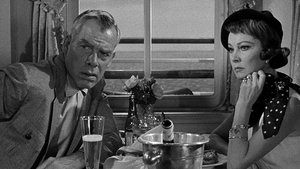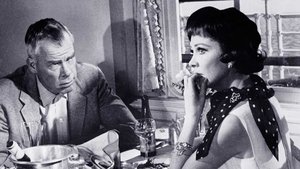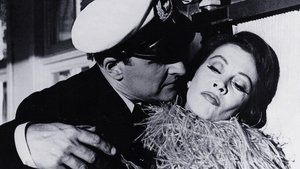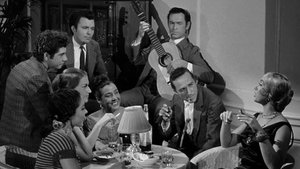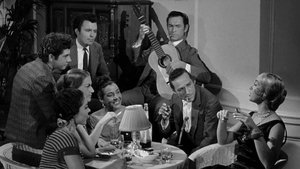Video Sources 0 Views
- Watch trailer
- Ship of Fools 1965 Colorized

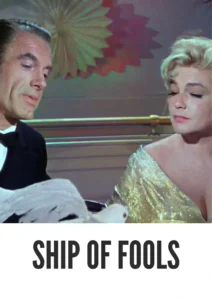
Synopsis
Table of Contents
Toggle
Embark on a thought-provoking journey with Ship of Fools, Stanley Kramer’s epic 1965 drama, now beautifully colorized to enhance its powerful themes and unforgettable characters. Featuring an all-star cast, including Vivien Leigh and Simone Signoret, this film explores the complex tapestry of human nature aboard a passenger liner bound for Germany in 1933. Perfect for lovers of classic cinema and those who appreciate stories that delve into the depths of the human condition, this HD download brings a timeless masterpiece to life like never before.
Ship of Fools unfolds almost entirely on a passenger ship sailing from Veracruz, Mexico, to Bremerhaven, Germany, in 1933. The passengers, a diverse group of individuals from various backgrounds and nationalities, represent a microcosm of society on the eve of World War II.
Among them are Mary Treadwell, a middle-aged American divorcée seeking to recapture her youth; La Condesa, a Spanish countess and political prisoner battling a drug addiction; Dr. Schumann, the ship’s doctor who develops a forbidden love for La Condesa; Rieber, a German businessman and fervent Nazi sympathizer spreading his hateful ideology; and a host of other characters grappling with their own prejudices, desires, and disillusionments.
As the ship sails closer to its destination, tensions rise, and hidden truths are revealed, forcing the passengers to confront their own moral failings and the growing darkness engulfing Europe. Ship of Fools is a powerful allegory for the collective complacency and moral decay that paved the way for the horrors of the Holocaust, reminding us of the importance of empathy and resistance in the face of injustice.
The film features a stellar ensemble cast, each delivering memorable performances:
-
Vivien Leigh as Mary Treadwell
-
Simone Signoret as La Condesa
-
Jose Ferrer as Rieber
-
Oskar Werner as Dr. Schumann
-
Lee Marvin as Tenny
-
Michael Dunn as Glocken
-
Elizabeth Ashley as Jenny
Ship of Fools is a drama that explores themes of prejudice, love, loss, and the human condition against the backdrop of a world on the brink of war.
Released in 1965, Ship of Fools reflects the anxieties and uncertainties of the Cold War era, while also serving as a stark reminder of the dangers of unchecked hatred and intolerance. The film’s depiction of rising fascism in Germany resonated with audiences still grappling with the legacy of World War II, prompting reflection on the choices that led to the Holocaust and the importance of vigilance against extremism. Ship of Fools remains a relevant and timely film, urging viewers to learn from the mistakes of the past and strive for a more just and compassionate future.
This colorized version of Ship of Fools has been carefully restored using modern digital techniques, enhancing the visual impact while preserving the film’s original atmosphere and emotional depth. The colorization process involved meticulous attention to detail, with researchers studying historical records and photographs to ensure accuracy and authenticity. The result is a vibrant and immersive viewing experience that brings new life to the characters and settings, allowing audiences to connect with the story in a fresh and meaningful way. While some purists may debate the merits of colorizing classic films, it introduces these films to a broader audience, ensuring their legacy for future generations.
-
: Stanley Kramer
-
: Abby Mann, Katherine Anne Porter (novel)
-
: Ernest Laszlo
-
: Robert C. Jones
-
: Stanley Kramer Productions
-
: Columbia Pictures
-
: 149 minutes
-
: MP4
-
: HD (1080p)
-
: Compatible with most devices, including smartphones, tablets, computers, and smart TVs.
Ship of Fools (1965) was met with critical acclaim upon its release, earning numerous awards and nominations, including eight Academy Award nominations. The film was praised for its powerful performances, its thought-provoking themes, and its masterful direction. It remains a highly regarded and influential film, celebrated for its enduring relevance and its unflinching portrayal of the human condition.
-
: What is Ship of Fools about?
-
A: Ship of Fools is a drama about a group of passengers on a ship bound for Germany in 1933, whose lives and prejudices reflect the growing tensions of the pre-war era.
-
-
: Is Ship of Fools (1965) a well-known film?
-
A: Yes, Ship of Fools is a classic film that has been recognized for its artistic merit and historical significance.
-
-
: Is this version of Ship of Fools colorized?
-
A: Yes, this version has been professionally colorized to enhance the viewing experience.
-
-
: What makes Ship of Fools interesting for classic film fans?
-
A: Ship of Fools offers a compelling and thought-provoking exploration of human nature, featuring stellar performances and masterful direction.
-
-
: What is the download format?
-
A: The download format is MP4, which is compatible with most devices.
-
-
: What resolution is the download?
-
A: The resolution is HD (1080p), providing a high-quality viewing experience.
-
Watch Ship of Fools Today!
